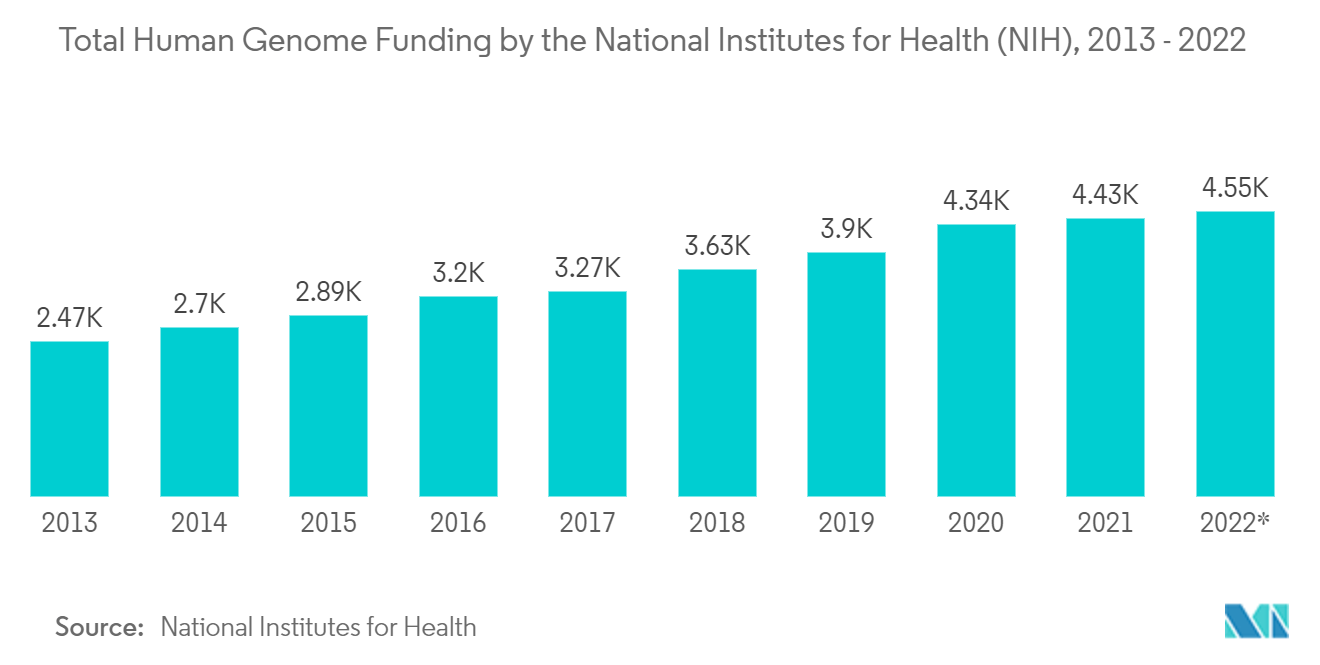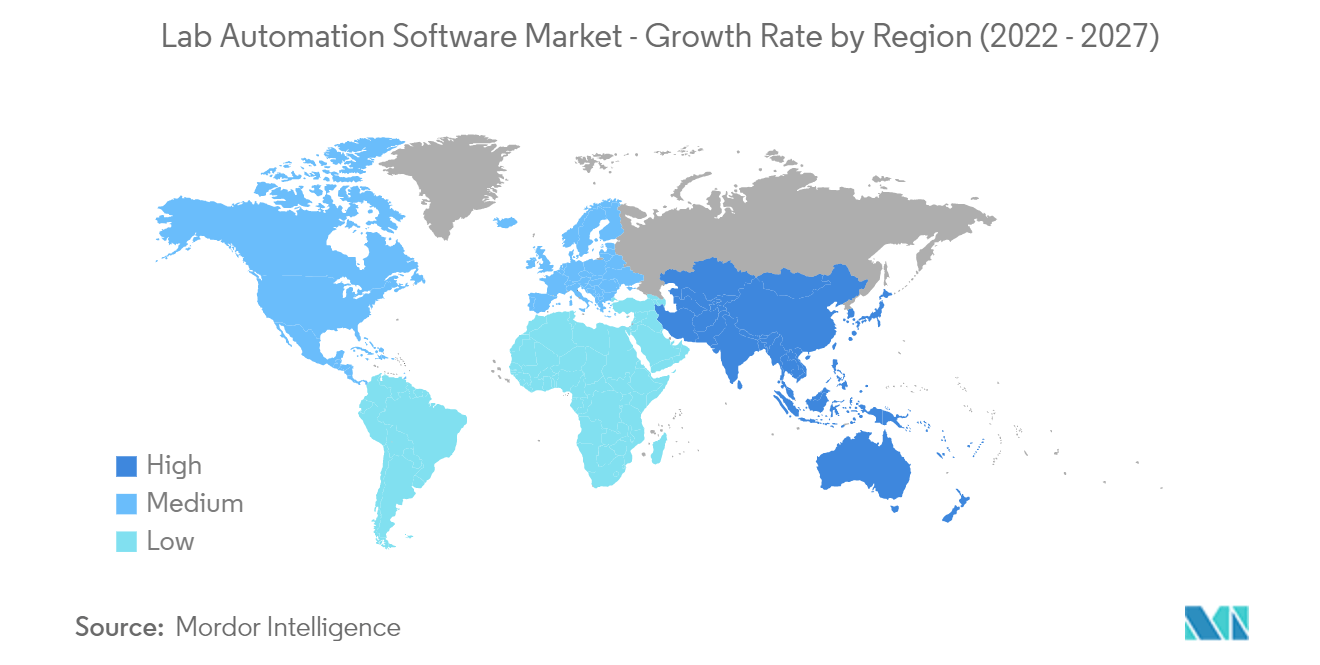Market Trends of Lab Automation Software Industry
This section covers the major market trends shaping the Lab Automation Software Market according to our research experts:
Laboratory Information Management System Expected to Have Largest Market Share
- The laboratory information management system industry exhibited robust growth over the past five years as laboratories grappled with an increase in sample volumes, partly due to the increased demand for diagnostic testing from the burgeoning elderly population.
- Industry operators have particularly focused on developing software that assists with operational issues, such as data security and regulatory compliance. This market is driven by certain factors, such as the rising pressure to comply with regulations, a growing need to integrate healthcare systems, a shift from legacy systems to commercial off-the-shelf LIMS solutions, and technological advancements in LIMS products.
- Moreover, the funding for tests, such as genome and DNA, has led to an increase in laboratory information and data. Therefore, the rising practice of genome study is favoring the market growth. Associated advantages, such as high precision and elimination of manual data transcription errors, are also anticipated to provide a boost to the market.
- According to NIH (National Institutes for Health), Human genome funding by the NIH was around 4.43 billion U.S. dollars in 2021, which is estimated at 4.55 billion U.S. dollars in 2022. such funding is also anticipated to boost the market.
- Northern Ireland's Minister of Health recently announced the launch of a new GBP 40 million Laboratory Information Management System (LIMS) that will significantly improve the delivery of clinical diagnostic services in key areas of healthcare.

Asia Pacific is Expected to be the Fastest Growing Market
- Asia-Pacific is the fastest-growing region for lab automation software, owing to the rapid growth in the pharmaceuticals market in this region. The growth can be attributed to the increased investment in pharmaceutical research and development in this region.
- For instance, in May 2022, US pharmaceutical company Pfizer set up its first global drug development center in Asia at the Indian Institute of Technology-Madras Research Park, India. The company has invested USD 20 million in the center to develop innovative formulations, small molecules, and active pharmaceutical ingredients (APIs).
- Also, in February 2022, Beroni Group, an Australia-based biopharmaceutical company, signed a contract to build a new R&D center in China's Zhuhai National High-Tech Industrial Development Zone. These expansion initiatives and investments are expected to boost the market growth in the region.
- Furthermore, this region is ideal for conducting pharmaceutical research due to the large pool of heterogeneous population groups, unlike other continents. This region is considered the most preferred to outsource pharmaceutical research, owing to the availability of skilled labor and lower cost required to develop drugs.
- Additionally, the companies in the other regions face stringent regulations and lengthy timelines, further escalating the project cost. Therefore, North American companies are shifting toward CRO (contract research organization) partnership, which has benefited this region the most to get more research projects. As time and the budget are the most crucial factors for the development, drug companies are opting for automated lab software that can reduce the errors, cost, and time-related to the discovery of the drug.
- For instance, in October 2021, GC Labs, a Korea-based clinical diagnostics company, introduced WASPLab, the first microbiology Total Laboratory Automation system in Korea. The solution automatically processes the steps from sample receipt to inoculation, culture, and interpretation, which had previously been conducted manually. In particular, it automatically interprets the culture as positive or negative. It allows test staff to double-check images on the monitor before reporting the final results to clinical professionals.


